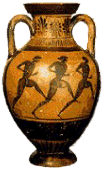
Image: athensmarathon.com
Experienced media executive Richard J. Graziano leads WPIX PIX 11, a New York Tribune Media television station, as president and general manager. For recreation, Richard Graziano stays active by running, having participated in the ING Hartford Marathon.
When runners like Rich Graziano compete in a marathon, it means they join numerous others in an effort to complete a 26.2 mile race. Marathons are exceptionally popular. For example, the New York City Marathon draws tens of thousands of competitors per year.
But why 26.2 miles? It is, after all, an eccentric number. The answer lies partially in ancient history, where the marathon originates.
During its war with the Persian Empire, Ancient Greece fought and won a major battle at Marathon. To get news of the victory back to Athens, a solider named Pheidippides succeeded in running the roughly 25 mile distance. Legend has it that he delivered the news to his fellow citizens and then promptly died from the excursion.
The modern form of the marathon began with the revival of the Olympic Games during the late 19th century. Early on, the length of the race varied, though it always hovered around 25 miles. The extra 1.6 miles was added to accommodate the desires of the British royal family during the 1908 Olympics to begin the race at Windsor Castle.
You must be logged in to post a comment.